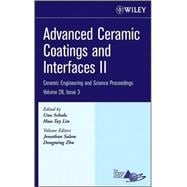
Jonathan Salem is a Materials Research Engineer atNASAGlennResearchCenter inCleveland,OH. He received a BS in Materials Science and Metallurgical Engineering from theUniversity ofCincinnati in 1983 and worked at NASA-Lewis as a Materials Research Engineer for two years performing heat treatment and fracture studies of titanium and steel alloys. In 1987 he received an MS in Materials Science from theUniversity ofWashington,Seattle and served at NASA–Glenn as Project Leader of the Toughened Ceramics Life Prediction Program on development of mechanical testing methods and standards for ceramic materials. In 1999 he received a PhD in Mechanical engineering from theUniversity of Washington. Presently, he is involved with the room and elevated temperature mechanical testing and reliability modeling of ceramic, intermetallic and composite materials for the Life Prediction, where briefly served as a temporary Deputy Branch Chief. Prior to working at NASA, he worked in Quality Assurance at Powell Valve, Cincinnati, OH, and at Forest City Foundries, Cleveland, OH. He authored or co-authored over 60 archival publications, over 70 proceedings publications, and four national and international standards on mechanics of ceramics. He is a fellow of American Society for Testing and Materials and received a NASA Manned Spaced Flight Awareness Award for work on ceramic bearings for the Space Shuttle Main Engine Turbo-pump. In 2004, he received the Richard M. Fulrath Award from the American Ceramic Society for development of technical standards for design of structural ceramics.
Dongming Zhu is a senior Materials Research Engineer at Army Research Laboratory, Vehicle Technology Directorate, and Durability and Protective Coatings Branch of Structures and Materials Division, at NASA Glenn Research Center. His expertise covers the areas of thermal conductivity, lattice defects and transport, high temperature oxidation, high-heat-flux testing, and mechanical behavior of ceramic coating systems, with an emphasis on experimental investigation and analytical modeling of processing, thermal fatigue and fracture behavior of advanced protective coatings and composites. His major contributions include the development of low conductivity thermal barrier coatings for turbine airfoil applications, 1650°C thermal/environmental barrier coatings for SiC/SiC ceramic matrix composite (CMC) turbine vane and combustor liner applications. He has authored more than 100 archival publications and three patents. He is a member of the American Ceramic Society and ASM, International, has been a lead organizer for several International Symposia. He is currently the Chair-elect of the Engineering Ceramic Division of the American Ceramic Society, and an associate editor of the International Journal of Applied Ceramic Technology. He has received several awards from NASA and professional societies. He received his Ph.D. degree in Chemical Engineering and Materials Science from the University of Minnesota in 1996.
| Preface | p. ix |
| Introduction | p. xi |
| Thermal and Mechanical Properties of Thermal Barrier Coatings | |
| Thermal and Mechanical Properties of Zirconia Coatings Produced by Electrophoretic Deposition | p. 3 |
| Elastic and Inelastic Deformation Properties of Free Standing Ceramic EB-PVD Coatings | p. 11 |
| Thermal and Mechanical Properties of Zirconia/Monazite-Type LaPO[subscript 4] Nanocomposites Fabricated by PECS | p. 19 |
| Corrosion Behavior of New Thermal Barrier Coatings | p. 27 |
| Microstructural Characterization of Thermal Barrier Coatings | |
| Monitoring the Phase Evolution of Yttria Stabilized Zirconia in Thermal Barrier Coatings Using the Rietveld Method | p. 41 |
| Thermal Imaging Characterization of Thermal Barrier Coatings | p. 53 |
| Examination on Microstructural Change of a Bond Coat in a Thermal Barrier Coating for Temperature Estimation and Aluminum-Content Prediction | p. 61 |
| Quantative Microstructural Analysis of Thermal Barrier Coatings Produced by Electron Beam Physical Vapor Deposition | p. 71 |
| Investigation of Damage Prediction of Thermal Barrier Coating | p. 81 |
| Engineering of Thermal Properties of Thermal Barrier Coatings | |
| Effect of an Opaque Reflecting Layer on the Thermal Behavior of a Thermal Barrier Coating | p. 87 |
| Optimizing of the Reflectivity of Air Plasma Sprayed Ceramic Thermal Barrier Coatings | p. 99 |
| Thermal Conductivity of Nanoporous YSZ Thermal Barrier Coatings Fabricated by EB-PVD | p. 115 |
| Coatings to Resist Wear, Erosion, and Tribological Loadings | |
| Reduction of Wear by a TiBN Multilayer Coating | p. 127 |
| Characteristics of TiN/CrN Multilayer Coatings with TiCrN and CrTiN Interlayer | p. 135 |
| Development of a Duplex Coating Procedure (HVOF and PVD) on TI-6AL-4V Substrate for Automotive Applications | p. 145 |
| Novel Coatings of Cemented Carbides by an Improved HVOF Spraying Process | p. 159 |
| Fracture Mechanics Analysis of Coatings Under Contact Load | p. 167 |
| Coatings for Space Applications | |
| Heat Treatment of Plasma-Sprayed Alumina: Evolution of Microstructure and Optical Properties | p. 177 |
| Porous Ceramic Foam Catalysts for N[subscript 2]O-Based Satellite Microthrusters | p. 193 |
| Multifunctional Coatings, Nanostructured Coatings, and Interfaces Phenomena | |
| Development of Multi-Layered EBC for Silicon Nitride Ceramics | p. 205 |
| Reactive Bonding of Sapphire Single Crystal to Tungsten-Copper Metal Composite Using Directed Vapor Deposition Process | p. 209 |
| Protective Coating on Metals Using Chromium-Free Organic-Inorganic Silica Hybrid Aqueous Solution | p. 219 |
| An Energy Model of Segmentation Cracking of SiO[subscript x] Thin Film on a Polymer Substrate | p. 231 |
| Effect of Withdrawal Speed on Thickness and Microstructure of 8MOL% Yttria Stabilized Zirconia Coatings on Inorganic Substrates | p. 243 |
| Author Index | p. 253 |
| Table of Contents provided by Ingram. All Rights Reserved. |
The New copy of this book will include any supplemental materials advertised. Please check the title of the book to determine if it should include any access cards, study guides, lab manuals, CDs, etc.
The Used, Rental and eBook copies of this book are not guaranteed to include any supplemental materials. Typically, only the book itself is included. This is true even if the title states it includes any access cards, study guides, lab manuals, CDs, etc.